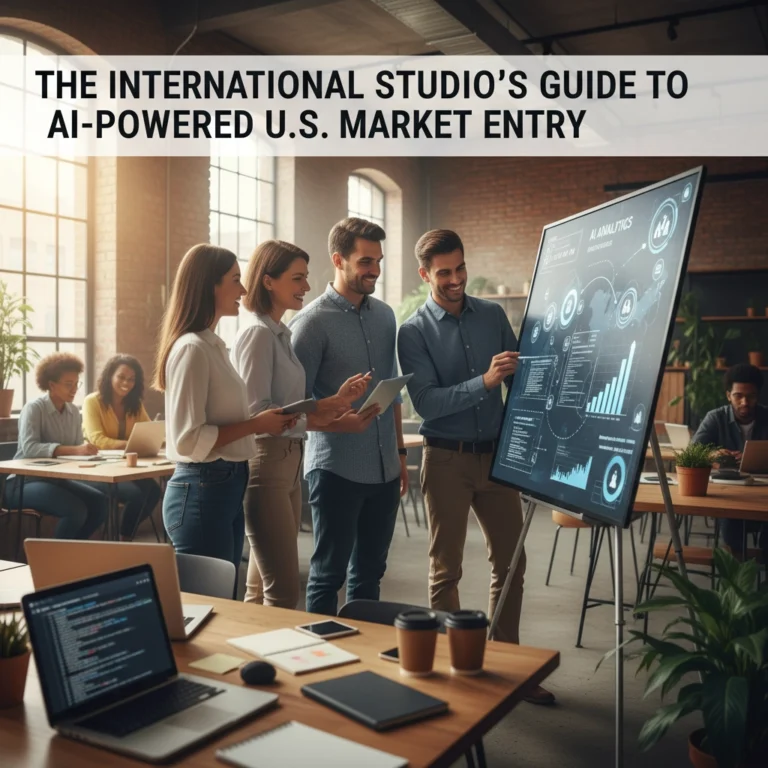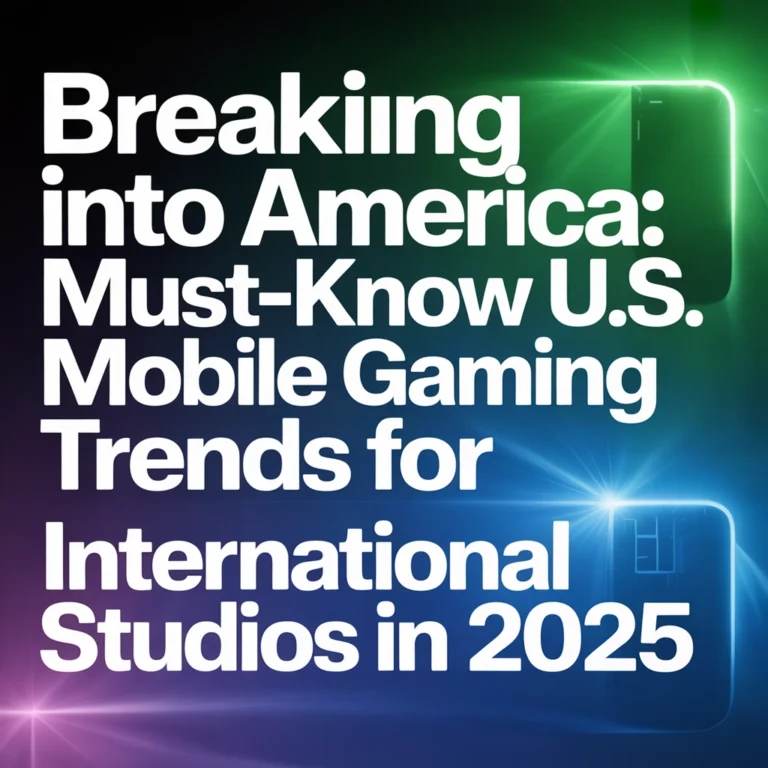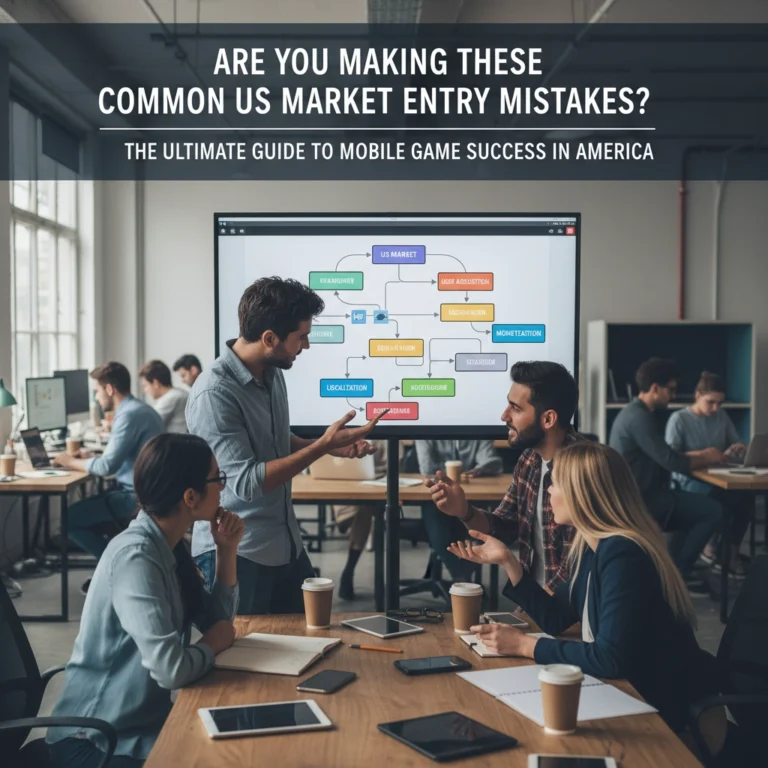Localize, Monetize, Thrive: Proven Strategies for Global Mobile Game Companies Entering America

The American mobile gaming market is booming. As of 2024, the U.S. accounts for the largest chunk of North America’s mobile gaming revenue—and it’s still accelerating. For international mobile game studios, this isn’t just exciting—it’s a massive growth opportunity. But cracking the U.S. market is rarely as simple as releasing an English-language build into the app stores and calling it a day. To truly thrive, studios need smart localization, savvy monetization, and a deep understanding of what American players want.
The American Mobile Gaming Landscape: Past the Hype, Into the Details
Smartphone saturation? Check. Lightning-fast 5G? Absolutely. American gamers expect smooth, visually sharp experiences, and they're always on the lookout for the next addictive multiplayer or competitive title. Casual and hyper-casual games are still hot, and there’s huge engagement for in-game events tied to pop culture or big entertainment brands. Even more, mobile esports and seamless live-streaming have become integral to the American mobile gaming scene.
If you want to win over U.S. players, you need to fit seamlessly into their existing habits—and sometimes even help shape the next big trend  .
.
Localizing for Real Success: Going Beyond the Language Switch
Localization is way more than translation. It’s about delivering a game that feels “made for me” to the American audience. Start with language—think natural, idiom-filled U.S. English, not just grammatically correct text—but don’t stop there.
Gen Z and the Power of Representation
Gen Z is the fastest-growing group of American mobile gamers. What are they looking for? Personalization, diversity, mental health awareness, sustainability, and authentic representation. They want customizable avatars, gender-neutral options, and storylines that reflect real social issues. If your game gives them a voice—through user content, level editing, or just letting them put their own stamp on things—you’re speaking their language.
Content, Timing, and Cultural Nuance
- Calendar Events: U.S.-specific events matter—think July 4th, Thanksgiving, or March Madness. Region-tied content launches can generate massive engagement.
- Cultural Trends: Keep an eye on the latest memes, trending sounds, or hit shows. Integrate references or partnerships where appropriate.
- Sensitivity: Avoid stereotypes and understand the cultural sensitivities unique to the U.S.; today’s gamers expect a higher standard
 .
.
Monetization Models That Work Stateside
American players are no strangers to spending—in fact, the U.S. leads the world in mobile in-app revenue. But that doesn’t mean just any model will fly. The right approach often mixes several revenue streams, adapting over time.
Subscriptions and Battle Passes
Services like Apple Arcade and Game Pass are putting subscriptions in the spotlight. Battle passes—offering tiered, time-limited rewards—are hugely popular in competitive games, but even casual titles are testing monthly or seasonal passes for exclusive perks or content. Invest in recurring billing tech with strong dunning (retry) logic, since U.S. users expect frictionless subscriptions and easy management.
Ad Monetization: Think Smart, Not Just More
Ads remain a key driver in casual and hyper-casual games, but heavy-handed approaches will backfire. U.S. players respond to rewarded ads and opt-in video placements—especially when they unlock novel features or cosmetic items, rather than just currency dumps  .
.
Purchase Flow and Promotions
• Make one-tap purchases seamless.
• Offer regional pricing—don’t stick everyone in the same bucket.
• Launch U.S.-specific payment bundles or limited-time offers around holidays, big sporting events, or cultural moments.
Get Paid: American Payment Preferences
If you want to hold onto players, your payment stack has to feel native—no international hiccups allowed. Americans rely on credit/debit cards, PayPal, Apple Pay, Google Pay, and increasingly digital wallets like Venmo or Cash App. They’re less likely to use bank transfers or in-person cash options.
- Currency: Always show prices in USD, never in foreign currencies or ambiguous “credits.”
- Fraud Rules: Have robust, America-specific fraud detection and dispute processes to build trust (and keep your margins protected).
- Third-Party Platforms: Leverage trusted in-app purchase frameworks for both Apple and Google, but enable alternative payment options where platform rules permit.
Competitive Positioning: Research, Analyze, and Stand Out
Understanding your competition is crucial. Analyze the leaderboard:
- Who are the current U.S. mobile gaming kings—by downloads and by revenue?
- Where are there gaps? (Genre, multiplayer features, social tools, representation of certain demographics)
- How do they handle events, influencer collaborations, and merchandising?
Emulate the successes but double-down on your unique differentiator—whether it’s a signature art style, a brand-new mechanic, or ultra-social features tailored to American player habits.
Marketing that Clicks: Meet Players Where They Are
American gamers live on social media—TikTok, Instagram, YouTube, and Discord. Influencers drive the conversation, and organic word-of-mouth in communities can put games on the map overnight.
- Launch Campaigns: Combine traditional mobile ads with content creator collaborations.
- Community Management: Invest in dedicated community managers and prompt social support.
- Events: Online or on-location launch parties, Twitch streams, and themed weeks tied to real-world happenings pay huge engagement dividends.
Continuous Optimization: Don’t Launch and Leave
U.S. player preferences shift fast. Establish regular performance reviews:
- KPIs: User acquisition, retention, conversion rates, lifetime value, and churn.
- Feedback Loops: In-game feedback, community polls, and direct outreach get real results.
- Iterate: Tweak monetization, add content, and rapidly A/B test new features or events to stay ahead of the curve.
Stay open to pivoting your approach, especially as Gen Z habits evolve or as viral games temporarily change the landscape.
The Systara Advantage
At Systara, we understand that entering the American market takes more than a translated UI or a flashy ad campaign. It’s about giving players a game—and a community—they genuinely want to belong to. By embedding cultural intelligence, agile monetization, robust localization, and agile marketing at every stage, global studios can do more than just launch in the U.S.—they can thrive, scale, and become a core part of America’s mobile gaming story.
Ready to build your American mobile gaming hit? Discover more about our titles and Systara’s dedication to global success at Systara Games.






